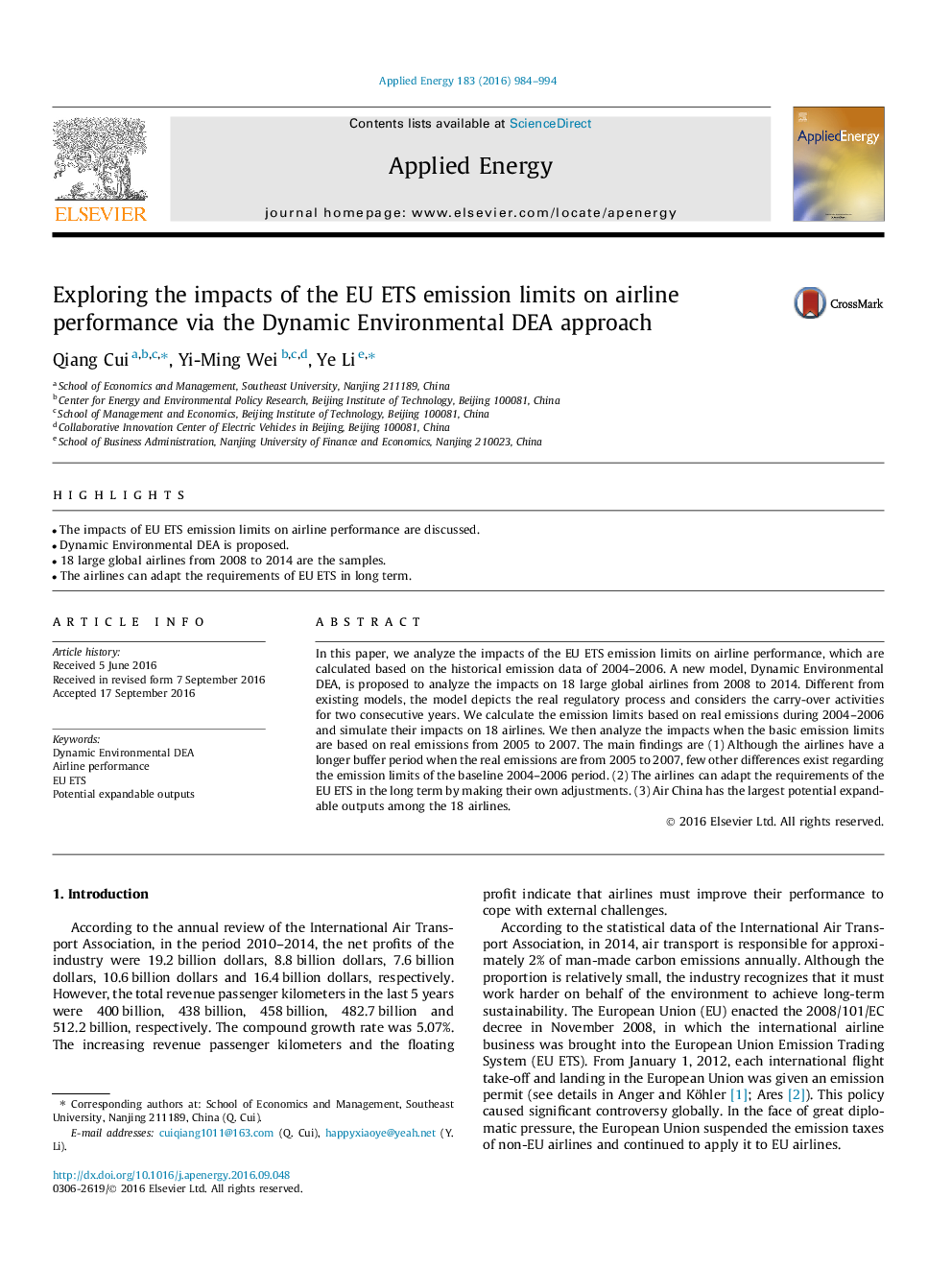| Article ID | Journal | Published Year | Pages | File Type |
|---|---|---|---|---|
| 4916628 | Applied Energy | 2016 | 11 Pages |
Abstract
In this paper, we analyze the impacts of the EU ETS emission limits on airline performance, which are calculated based on the historical emission data of 2004-2006. A new model, Dynamic Environmental DEA, is proposed to analyze the impacts on 18 large global airlines from 2008 to 2014. Different from existing models, the model depicts the real regulatory process and considers the carry-over activities for two consecutive years. We calculate the emission limits based on real emissions during 2004-2006 and simulate their impacts on 18 airlines. We then analyze the impacts when the basic emission limits are based on real emissions from 2005 to 2007. The main findings are (1) Although the airlines have a longer buffer period when the real emissions are from 2005 to 2007, few other differences exist regarding the emission limits of the baseline 2004-2006 period. (2) The airlines can adapt the requirements of the EU ETS in the long term by making their own adjustments. (3) Air China has the largest potential expandable outputs among the 18 airlines.
Keywords
Related Topics
Physical Sciences and Engineering
Energy
Energy Engineering and Power Technology
Authors
Qiang Cui, Yi-Ming Wei, Ye Li,
